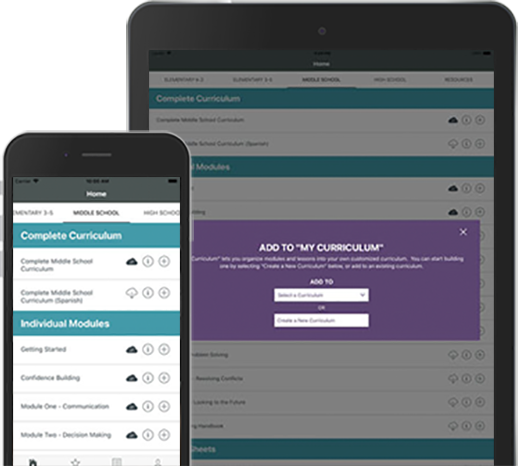Exploring Job Possibilities
Posted: May 22, 2018Real world experience is essential for real-world success, and a summer job is a great way for your students to enter the workforce so they can start building their resumes and meet possible references for future employment.
The following lesson is from Module Eight: A Game Plan for Work of our High School Level curriculum (page 477). In this lesson, students will understand the process of finding a job and learn how their unique interests and qualifications can help direct them to a job that is appropriate for them. You can download the entire module for free by logging in to your account.
Exploring Job Possibilities
AGENDA
- Starter
- My Qualifications
- This Is Your Job
- The Ideal Part-Time Job
- Conclusion
- Questions for Assessment
OBJECTIVES
- Students will revisit their strengths and identify their interests.
- Students will identify the process of finding a job.
- Students will identify the characteristics of their ideal jobs.
MATERIALS NEEDED
- A printout of available positions from a job posting website (Starter)
- One copy of the “My Qualifications” activity sheet (#2) for each student (Part I and Part III)
- One copy of the “Ideal Job Equation” activity sheet (#3) for each student (Part III)
STARTER (3 Minutes)
Bring to class printouts of available positions in your area from a job posting website (e.g., idealist.org, monster.com, indeed.com). Distribute one page to each student. Have students count the number of jobs on each page and record the totals on the board or on an overhead transparency. Then, tell the class how many pages of available positions there were on each job site and ask them to calculate the approximate number of jobs open.
Say, “With so many choices, how can you decide which job is the right one for you?” Explain that today’s lesson will help students determine how to find the right job for them.
PART I — MY QUALIFICATIONS (10 MINUTES)
Purpose: Students identify their qualifications and interests.
Students identify their qualifications and interests as they complete an activity sheet.
Explain to students that each of them brings certain qualifications and interests to a job. Identifying their unique qualities will help direct them to a job that is appropriate for them.
Distribute copies of the “My Qualifications” activity sheet (#2). Begin by discussing strengths. Remind students that strengths are admirable qualities that people have. Ask students to name a few. (Students should respond: loyal, caring, sense of humor, and so forth. If they name a talent, accept it.)
If students completed the “Strengths Interview” activity sheet (Confidence Building, “Lesson 2: Identifying Strengths”), ask them to take it out of their folders and review it for about a minute. If students have not completed the activity sheet, give them a minute to brainstorm a list of their strengths.
Discuss the “My Qualifications” activity sheet (#2) with students and clarify the different sections. As appropriate, explain:
- Strengths: You listed these on the “Strengths Interview” activity sheet (or during the brainstorming that you just did).
- Knowledge: This is what you have learned in school, in classes such as math, science, or English. Knowledge can also be what you’ve learned from your hobbies, activities, or other experiences.
- Talents: These are things that you do well, like singing, swimming, or writing.
- Interests: These are things that you enjoy doing, like listening to music, playing sports, or going to the movies. You don’t have to be good at doing something for it to be an interest.
- Experience: These are jobs or activities in which you have been involved. They might include babysitting, delivering papers, entering a science fair, or working in a store or office.
Students recognize that their strengths, talents, interests, experience, and knowledge can help them find a job.
Have students fill out the “My Qualifications” activity sheet (#2).
When students have finished, point out that they should tell potential employers about these qualifications, as they show their strengths and make them good candidates for a job.
PART II — THIS IS YOUR JOB (15 MINUTES)
Purpose: Students recognize what they are looking for in a job.
Students are randomly assigned jobs to spark their thinking about what they want to do.
Say, “Now that you have realized your qualifications and interests, who wants a part-time or summer job?”
Walk around the room and randomly give jobs to the students who have their hands raised. Tell one student that he or she is a veterinarian’s assistant, another that he or she is a cashier at a convenience store, and another that he or she delivers pizzas.
When all of the volunteers have been assigned jobs, ask students if getting a job is really that easy.
Students discuss the process of getting an after-school job.
When students respond that it is not that easy to find a job, ask them how someone does get an after-school or part-time job.
Elicit from students some of the following steps:
- Answering advertisements
- Responding to postings in store windows
- Filling out applications
- Aptitude testing
- Interviewing
- Networking (making contacts in the career field)
Record student responses on the board or on an overhead transparency.
Students discuss what they want in an after-school job.
Explain to students that there are many things they have to think about and do before they get hired for a job. Ask students to suggest some of the things they need to consider. Add responses to those already on the board or overhead transparency. (Students should respond: you need to decide what you want to do, think about where you want to work, find out what jobs are available, and decide which jobs you’re qualified for.)
To conclude, point out to students that they already know about the different things that interest them or that they would like to do. They also know what they can’t do because of their schedules or because they have limited transportation or other restrictions. Explain that they need to find a job that meets all of those requirements.
PART III — THE IDEAL PART-TIME JOB (20 MINUTES)
Purpose: Students identify the characteristics of their ideal part-time jobs.
Students use an activity sheet to determine important factors to consider while looking for employment.
Remind students that short-term jobs provide excellent training and great experience. Explain that this activity will help them consider the factors that will determine what their ideal short-term jobs are.
Distribute copies of the “Ideal Job Equation” activity sheet (#3). Discuss the sections of the activity sheet with the class. Explain to students that qualifications are the skills they have, such as knowledge or experience, that will help them get a job, and that salary is how much they will be paid.
Ask students to identify some of the factors that determine salary. Elicit from students that experience and level of education can affect how much money they earn. Encourage students to think about how much money they need to make.
Point out that location is also important because they need to be able to get to their jobs. If they don’t have access to transportation, they have to think about jobs that are within walking distance.
Explain to students that job environment is important because they will want to feel comfortable where they are working. Ask students to consider whether they want to work indoors or outside, with people or alone, in a big office or for a small company.
Explain that limitations are factors that might keep an employer from hiring them, such as their age, their availability to work full time, or their school schedule.
Have students fill in the boxes on the activity sheet with appropriate responses. Suggest that students use the “My Qualifications” activity sheet (#2) for reference.
Students consider their ideal jobs.
After students have completed the activity sheet, explain that based on the factors they listed, they should be able to determine their ideal part-time jobs. For example, they might want an after-school job that allows them to be outdoors, that allows them to work only on the weekends, and that pays more than minimum wage. With these criteria, they might be able to find a job at a park or with a florist or landscaper.
Elicit other examples from students and have the class brainstorm possible job options.
CONCLUSION (2 MINUTES)
Ask students how they will use decision-making skills, such as gathering information and weighing options, in their job searches. Elicit from students the following key points that were taught in this lesson:
- Each person has unique strengths, interests, knowledge, talents, and experiences.
- To find a job, individuals must determine their qualifications and interests.
- An ideal short-term job is one that meets all personal requirements.
QUESTIONS FOR ASSESSMENT
- List three jobs that would use some of your qualifications. Explain which of your qualifications would be used and how.
- List three things that you are looking for in a job.
- What jobs are available to you now? Which of them meet your personal requirements?






